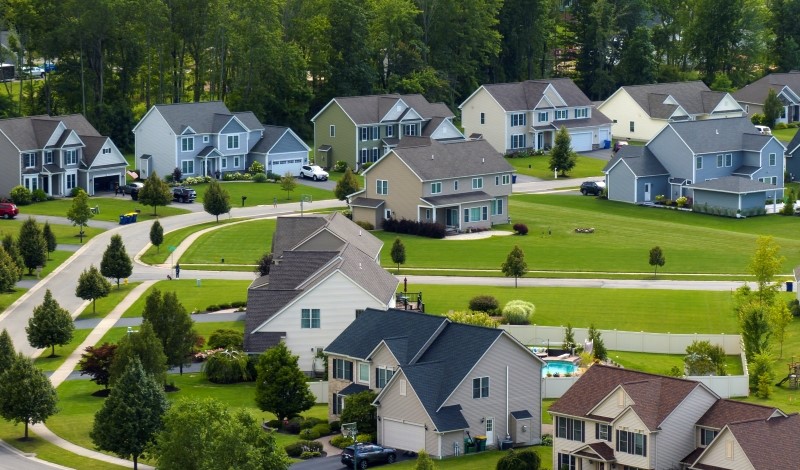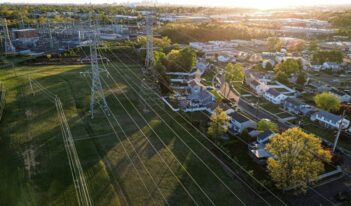
Scholars argue that relaxing zoning laws may not have the effect that policymakers intend.
Policymakers in the United States today are grappling with two major crises: the lack of affordable housing and the looming threat of climate change, to which housing is a significant contributor because of urban sprawl.
In response to these challenges, policymakers have loosened aspects of the zoning laws that govern the structures and activities permissible on a piece of land. But according to some scholars, these reforms may not have the effect that policymakers intend.
In a recent article, Christopher Serkin, a professor at Vanderbilt Law School, and Kelsea Best, an assistant professor at The Ohio State University, argue that to address the environmental and housing crises, relaxed zoning laws must result in housing growth and greater density in urban areas. They find, however, that density is correlated with more intensive zoning, not less.
Most states grant their municipalities the authority to regulate land use through zoning laws. These laws dictate acceptable developmental and operational uses of land. For example, they can control the ways in which the land can be developed, specify the purpose it can serve, and set density restrictions, minimum lot sizes, and height limits. Developers must comply with these restrictions––limiting the number of housing units they can build and imposing additional costs on their projects.
As a result, policymakers and scholars agree that these restrictions reduce the supply of new housing and drive up prices, further exasperating the affordable housing crisis. Statistics underscore the severity of the situation: It is estimated that the United States needs four to five million more homes on the market than it currently has and over 40 percent of renters spend more than 30 percent of their income on housing costs.
Furthermore, Serkin and Best argue that zoning laws have a significant impact on carbon emissions, a major contributor to climate change. Restrictions on commercial developments in residential areas and single-family zoning promote “sprawl” ––the spread of low-density development over large areas. Sprawl requires residents to travel greater distances for work, food, and other necessities and tends to result in larger, single-family homes. These activities release large amounts of carbon into the atmosphere, state Serkin and Best.
Recognizing the role zoning laws play in these two critical areas, some states have enacted more flexible zoning laws and others have eliminated these laws altogether, explain Serkin and Best. In 2019, Minneapolis was the first major city to eliminate single-family zoning.
Some policymakers assume that looser zoning laws will increase housing supply and moderate costs as well as promote density to reduce sprawl, contend Serkin and Best. Although growth has been evident, Serkin and Best argue that these reforms have not resulted in greater density.
Serkin and Best examined the relationship between the intensity of zoning laws and population density. They found that places with more restrictive zoning were denser than those with looser zoning laws.
This relationship holds even after removing cities, such as New York, that might disproportionately skew the results.
Serkin and Best offer several reasons for this unexpected outcome. For example, homeowner associations (HOAs), responsible for making and enforcing rules in housing communities, can impose density restrictions through land use and home occupancy rules.
Serkin and Best warn that communities resistant to increases in density may adopt restrictive HOAs––undermining the positive effects of zoning reforms. In fact, the two researchers found that “HOAs are perceived by homebuyers as a valuable substitute for local government.”
Serkin and Best also argue that developers may be reluctant to build dense multi-family housing because they have longer construction timelines and higher costs. In addition, they explain that the profitability of these projects is subject to changes in market conditions and constraints on the construction industry, such as labor shortages. Given these financial risks, developers are more likely to build single-family homes, contend Serkin and Best.
By only stimulating growth and not increasing density, zoning reforms may worsen urban sprawl and its adverse environmental impacts, caution Serkin and Best. They contend that legislators need to be more deliberate in how they reform these laws.
Serkin and Best suggest that legislators should focus their efforts specifically on the urban core, rather than deregulating zoning laws entirely. Reforms should focus on increasing density in urban areas while reducing sprawl, argue Serkin and Best. They also propose easing restrictions and costs only for multi-family housing––mitigating some financial risks and encouraging developers to build these structures.
Contrary to Serkin and Best’s findings, some studies have shown that there is a positive correlation between relaxed zoning laws and density. An analysis of low-density, single-family suburban neighborhoods in Portland found that zoning reforms resulted in an increase in density from 4.3 units per acre to 7.1 units per acre. Another study in New York found that population density increased in areas of zoning deregulation.
Reforming zoning laws has the potential to address two major crises affecting the United States today. Serkin and Best, however, doubt the effectiveness of recent reforms. As more states consider changes to their zoning laws, Serkin and Best recommend that policymakers focus more of their efforts on improving density in urban areas.



